National parks offer unparalleled opportunities for exploration, connecting us with nature’s beauty and diversity. From hiking trails to wildlife encounters, these protected areas inspire adventure and conservation efforts.
Why Visit National Parks?
National parks offer a gateway to stunning landscapes, diverse wildlife, and opportunities for outdoor adventures. Visiting these protected areas allows you to disconnect from urban life and reconnect with nature. Parks provide a chance to explore unique ecosystems, from towering forests to vast deserts, fostering a deeper appreciation for Earth’s biodiversity. They also serve as educational hubs, offering insights into geological history and cultural heritage. Additionally, national parks promote physical and mental well-being through activities like hiking, camping, and wildlife watching. By preserving these natural wonders, parks ensure future generations can experience their beauty and significance, making them a vital part of our collective heritage.
Popular National Parks in the United States
The United States is home to numerous iconic national parks, each offering unique landscapes and experiences. Yellowstone National Park, America’s first national park, is renowned for its geothermal wonders like Old Faithful and diverse wildlife. Yosemite National Park in California is famous for its granite cliffs, waterfalls, and giant sequoias. The Grand Canyon, one of the most recognizable natural wonders, showcases breathtaking vistas and geological history. Zion National Park in Utah attracts adventurers with its red rock canyons and challenging trails, while the Great Smoky Mountains National Park offers lush forests and vibrant wildflowers. These parks provide endless opportunities for exploration and connection with nature.

Planning Your National Park Adventure
Research park regulations, obtain necessary permits, and gather essential gear. Check trail conditions and weather forecasts to ensure a safe and enjoyable experience.
Best Time to Visit National Parks
The ideal time to visit national parks varies by season and location. Summer offers warm weather and access to high-altitude trails, but parks can be crowded. Autumn provides stunning foliage, while spring brings wildflowers and mild temperatures. Winter is perfect for snow sports but may limit access to certain areas. Check park websites for seasonal activities and trail conditions. Plan visits during shoulder seasons to avoid crowds and enjoy a more serene experience. Weather forecasts and park regulations are essential to review before your trip. Timing your visit according to your preferences ensures a memorable and enjoyable national park adventure.
How to Choose the Right Trail for Your Skill Level
Selecting the right trail depends on your fitness level, experience, and the time you have. Start by assessing your physical condition and hiking skills. Look for trails classified as easy, moderate, or difficult, and choose based on your abilities. Check trail length, elevation gain, and terrain type. Use park resources like maps, visitor centers, or online reviews to gauge difficulty. Beginners should opt for shorter, well-marked trails with minimal elevation changes. Experienced hikers can explore more challenging routes. Always consider weather conditions and trail maintenance. It’s essential to balance your ambitions with safety to ensure an enjoyable and safe adventure. Proper planning ensures a rewarding experience for all skill levels.
Essential Gear for a National Park Adventure
Packing the right gear ensures a safe and enjoyable experience. Start with a sturdy backpack to carry all essentials. Bring a detailed map, compass, and GPS device for navigation. Wear appropriate footwear, such as hiking boots, for terrain stability. Include layers of breathable clothing for varying weather conditions and a waterproof jacket. Don’t forget a first aid kit, flashlight, and extra batteries. Stay hydrated with a reusable water bottle or hydration pack. Pack snacks, sun protection (hat, sunglasses, sunscreen), and insect repellent. A multi-tool knife and emergency shelter, like a lightweight blanket, are also crucial. Always check weather forecasts and adjust your gear accordingly. Proper preparation enhances your adventure and ensures safety in the wilderness.
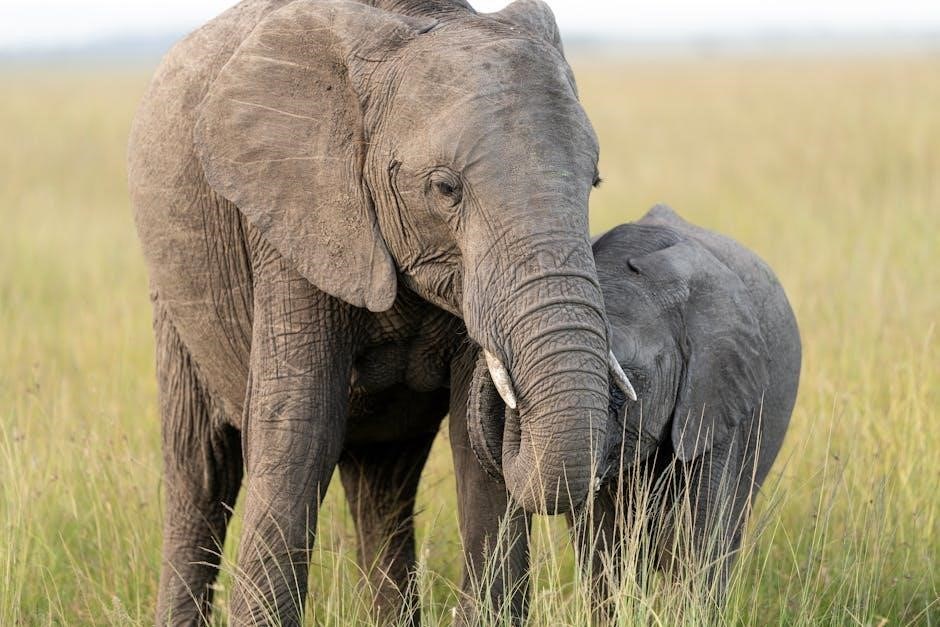
Safety Tips for National Park Exploration
Always carry a map, stay on marked trails, and bring enough water. Inform someone of your plans and respect wildlife boundaries. Be prepared for emergencies and changing weather conditions.
Understanding Trail Markers and Maps
Trail markers and maps are essential tools for navigating national parks. Trail markers are signs or symbols that indicate the path’s direction, distance, or notable features. They may include arrows, color-coded blazes, or informational plaques. Maps, whether digital or physical, provide a broader view of the terrain, trails, and landmarks. It’s crucial to carry a detailed topographic map and know how to read it. Pay attention to symbols, scales, and legends to identify trails, elevations, and potential hazards. Familiarize yourself with GPS apps as an additional aid, but always have a backup map in case of no signal. Practice using both tools before heading out to ensure a safe and enjoyable adventure.
Wildlife Safety: What to Know
Encountering wildlife in national parks is thrilling but requires caution. Always maintain a safe distance from animals, as they can behave unpredictably. Avoid feeding wildlife, as it disrupts their natural behavior and may lead to aggressive interactions. Stay alert and aware of your surroundings, especially in areas with limited visibility. Keep children close and ensure pets are leashed. Be prepared for encounters with large animals like bears or bison by carrying bear spray and knowing how to use it. Never approach or touch wildlife, even if they seem friendly. Respect their space to ensure both your safety and theirs. Remember, wildlife is wild and deserves your caution and respect.
Emergency Preparedness: First Aid and Navigation
Being prepared for emergencies is essential when exploring national parks. Always carry a first aid kit equipped with bandages, antiseptics, pain relievers, and any personal medications. Familiarize yourself with basic first aid techniques, such as wound cleaning and splinting. For navigation, bring a detailed map, compass, and GPS device or a smartphone with a GPS app. Inform someone of your itinerary and expected return time. Pack extra water, snacks, and a headlamp in case of unexpected delays. Know what to do if lost: stay calm, find or create a visible landmark, and conserve energy. Carry emergency shelter and a whistle to signal for help if needed.
Outdoor Activities in National Parks
Outdoor activities in national parks include hiking, camping, water sports, and wildlife watching, offering exciting ways to connect with nature and create lasting memories.
Hiking 101: Tips for Beginners
Welcome to the world of hiking! Starting your journey can seem daunting, but with the right tips, you’ll be ready for an unforgettable adventure. Begin by choosing trails labeled as “easy” or “moderate” to build your confidence and endurance. Always check trail conditions beforehand to ensure they’re safe and accessible. Bring a map, water, and snacks, even for shorter hikes. Wear sturdy, comfortable shoes or hiking boots to prevent blisters and injuries. Start small, gradually increasing your distance and difficulty as you gain experience. Stay on marked trails to avoid getting lost and respect the environment. Don’t forget to bring sun protection and a first-aid kit. If you’re unsure, consider hiking with a buddy or joining a group. Trekking poles can also help with balance on uneven terrain. Most importantly, enjoy the journey and take time to appreciate the breathtaking views around you. Remember to inform someone about your hiking plans and estimated return time. Rest when needed, and don’t push yourself too hard—nature is meant to be enjoyed, not rushed. Finally, leave no trace by carrying out all trash and preserving the natural beauty for others to explore. Happy trails!
Camping in National Parks: Dos and Don’ts
Camping in national parks offers a unique way to connect with nature, but it requires careful planning and respect for the environment. DO check park regulations beforehand, as rules vary by location. Always bring essential gear like a tent, sleeping bag, and water, and use designated campsites to minimize your impact. DO store food and trash properly to avoid attracting wildlife. DON’T litter or disturb natural habitats. Respect quiet hours and other campers. DON’T bring firewood from outside to prevent invasive species. DO use fire rings and fully extinguish flames before leaving. DON’T feed wildlife, as it disrupts their natural behavior. Always carry a map and first-aid kit, and inform someone of your itinerary. By following these guidelines, you can enjoy a safe and memorable camping experience while preserving the beauty of the parks for future visitors.
Water Sports and Fishing in National Parks
Water sports and fishing in national parks offer refreshing ways to connect with nature. Many parks feature lakes, rivers, and coastal areas perfect for kayaking, canoeing, or paddleboarding. Fishing enthusiasts can enjoy catching trout, bass, and other species, but must obtain permits and follow local regulations. DO check park-specific rules for gear restrictions and catch limits. DON’T disturb aquatic habitats or introduce non-native species. Always wear life jackets and be mindful of weather conditions. For a safer experience, bring proper gear and stay informed about water quality. These activities provide a unique way to explore and appreciate the natural beauty of national parks responsibly;
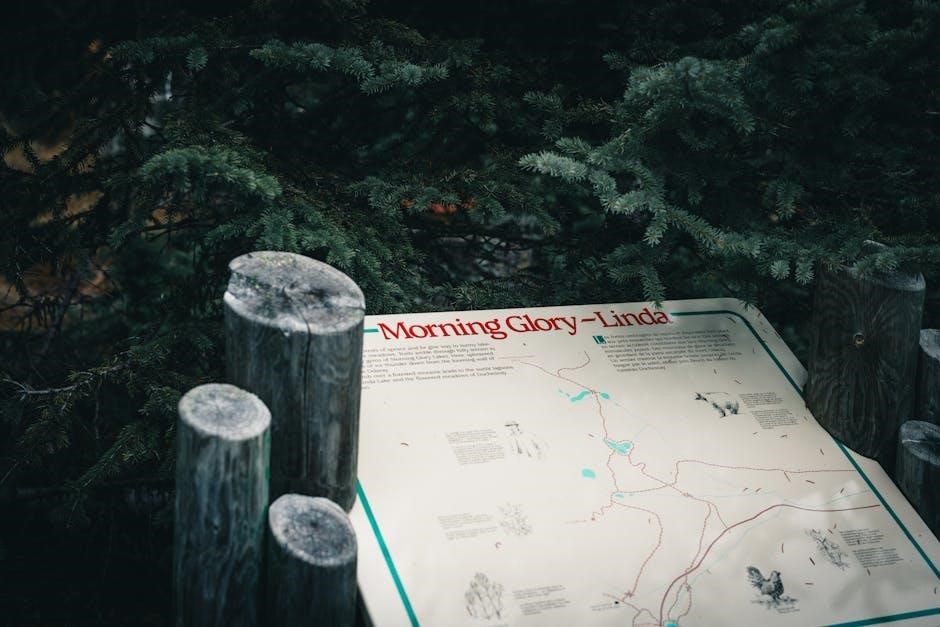
Wildlife Encounters in National Parks
National parks are home to diverse wildlife, offering thrilling opportunities to observe animals in their natural habitats. From majestic bears to graceful deer, these encounters inspire awe and appreciation for nature’s beauty. Always maintain a safe distance and respect wildlife boundaries to ensure a harmonious experience for both visitors and animals. Such moments highlight the importance of preserving these ecosystems for future generations.
Common Wildlife You Might Encounter
National parks are teeming with diverse wildlife, offering visitors a chance to observe animals in their natural habitats. Common sightings include deer, elk, bison, and bears, which roam freely in these protected areas. Smaller creatures like squirrels, rabbits, and birds are also abundant, adding to the parks’ vibrant ecosystems. When exploring, it’s essential to maintain a safe distance from wildlife to ensure both human and animal safety. Proper food storage and waste disposal are crucial to avoid attracting animals. These encounters provide unforgettable experiences, highlighting the importance of preserving these natural environments for future generations to enjoy and appreciate.
How to Respect Wildlife While Exploring
Respecting wildlife is essential for both their well-being and your safety during national park adventures. Always maintain a safe distance from animals to avoid stressing them. Never feed wildlife, as this can disrupt their natural behavior and create dangerous dependencies. Keep the environment clean by properly disposing of trash to prevent attracting animals to human food. Stay on designated trails to avoid disturbing habitats and use binoculars for observing wildlife without approaching them. Avoid making loud noises that could disturb their natural behaviors. By following these guidelines, you help preserve the balance of nature and ensure a safe, enjoyable experience for everyone.
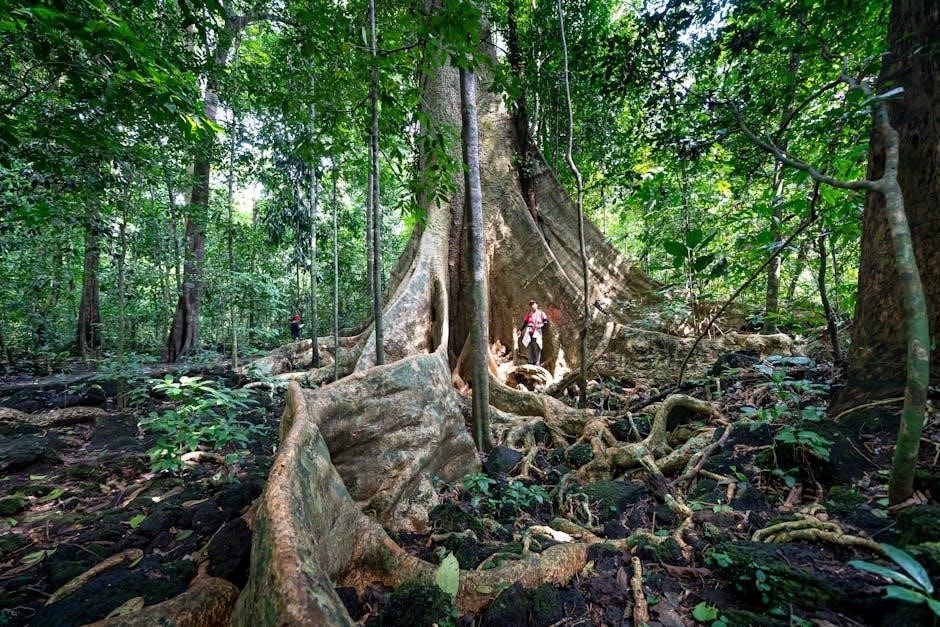
Birdwatching in National Parks
National parks are havens for birdwatching enthusiasts, offering diverse habitats that attract a wide variety of bird species. To make the most of your birdwatching experience, bring binoculars and a field guide to identify species. Many parks provide checklists of common birds, which can enhance your adventure. Visit during migration seasons for a chance to spot rare or seasonal visitors. Stay quiet and patient to observe birds in their natural habitats. Consider joining guided bird walks or using apps to locate active birding hotspots; Respect birds by keeping a safe distance and never disturbing nests or feeding areas. Birdwatching is a rewarding way to connect with nature and appreciate the parks’ biodiversity.
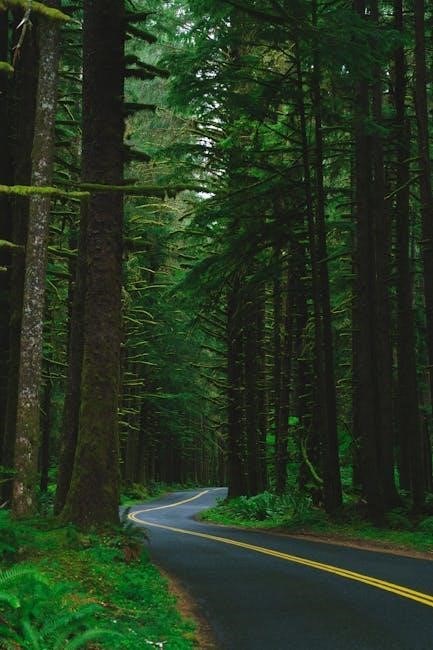
Seasonal Tips for National Park Visits
National parks offer unique experiences in every season. Check weather conditions, plan for crowds, and engage in seasonal activities like hiking, skiing, or wildlife viewing. Plan ahead and respect nature year-round.
Spring Adventures: Wildflowers and Mild Weather
Spring transforms national parks into vibrant landscapes of blooming wildflowers and lush greenery. Mild temperatures create ideal conditions for hiking and photography. Trails like those in Yellowstone and Yosemite burst with color as flowers like lupines and poppies bloom. It’s a prime time for spotting wildlife, such as elk calves and migratory birds, as they emerge from winter hideouts. Rangers often offer guided tours to highlight the best viewing spots. Visitors can also enjoy kayaking or biking on warmer days. Spring’s beauty attracts crowds, so early planning and reservations are essential for a seamless adventure amidst nature’s rebirth and renewal.
Summer Adventures: Hiking and Swimming
Summer is the perfect season for immersive national park experiences, offering warm weather ideal for hiking and swimming. Trails like those in Zion National Park and the Grand Canyon become hubs for adventurers seeking challenging treks with breathtaking views. Swimming in crystal-clear lakes, such as Crater Lake or the Great Lakes shoreline, provides refreshing relief from the heat. Many parks also offer waterfalls, natural springs, and rivers for kayaking or paddleboarding. Summer is peak season, so early planning is crucial to secure permits and accommodations. Rangers often host guided hikes and water safety programs, ensuring visitors make the most of their summer adventures while staying safe.
Winter Adventures: Snowshoeing and Skiing
Winter transforms national parks into serene landscapes perfect for snowshoeing and skiing. Parks like Rocky Mountain and Yellowstone offer tranquil trails for snowshoeing, allowing visitors to explore snow-covered forests and meadows. Cross-country skiing is popular in places like Grand Teton, where groomed trails provide endless opportunities for adventure. For downhill enthusiasts, destinations like Mount Rainier and Sierra Nevada offer slopes with fresh powder. Rangers often lead guided snowshoe walks, sharing insights into winter ecosystems. Before heading out, check trail conditions and consider renting equipment if needed. Always stay on designated trails to ensure safety and preserve the pristine winter environment. These winter adventures offer a magical way to experience nature’s beauty during the colder months.
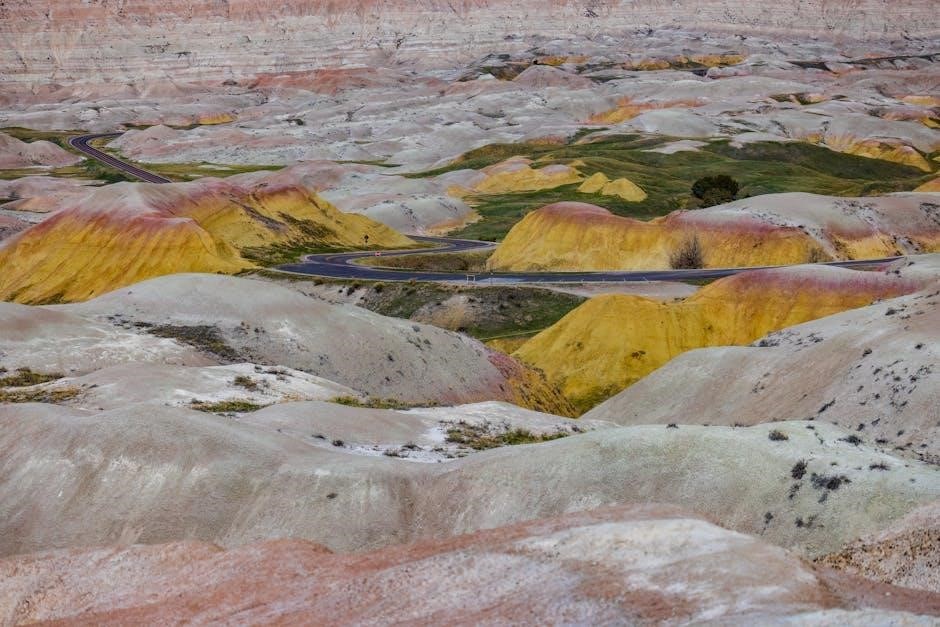
Family-Friendly National Park Adventures
National parks offer exciting opportunities for family exploration, with trails, wildlife, and educational programs tailored for all ages, fostering lifelong memories and a love for nature.
Best National Parks for Families
National parks like Yellowstone, Yosemite, and Zion offer family-friendly trails, educational programs, and breathtaking scenery, making them ideal for creating lasting memories with kids. Parks such as Acadia and Great Smoky Mountains provide accessible hiking paths and diverse wildlife, while places like Grand Teton and Olympic National Park offer a mix of outdoor adventures and serene landscapes. These destinations cater to families, ensuring a fun and enriching experience for all ages, while fostering a connection with nature and conservation.
Kid-Friendly Hiking Trails
National parks offer a variety of kid-friendly hiking trails designed to engage young explorers while ensuring safety and fun. Trails like the Grotto Trail in Zion National Park and the Alum Cave Trail in Great Smoky Mountains feature exciting natural wonders such as waterfalls and caves, keeping children captivated. Many parks provide shorter, well-marked paths with interpretive signs that teach about wildlife and ecosystems. For families with strollers, paved trails like the Yellowstone River Trail in Yellowstone are ideal. Remember to keep hikes short and engaging, with breaks for snacks and water. These trails foster a love for nature and adventure in children while creating lasting memories.
Engaging Kids with Nature
Engaging kids with nature in national parks fosters curiosity, exploration, and a lifelong appreciation for the outdoors. Encourage them to participate in interactive activities like scavenger hunts, where they can identify plants, animals, and landmarks. Many parks offer Junior Ranger programs, providing educational booklets that guide children through observations and challenges. Hands-on experiences, such as touching fossils or attending ranger-led talks, deepen their connection to the environment. Parents and educators can use these opportunities to teach stewardship and the importance of conservation. By involving children in meaningful outdoor experiences, we inspire a sense of wonder and responsibility for the natural world.

Photography in National Parks
Photography in national parks captures nature’s beauty, from vibrant landscapes to wildlife moments. Use optimal lighting and gear to preserve these memories effectively.
Capturing Stunning Landscapes
Capturing stunning landscapes in national parks requires a keen eye for lighting and composition. The golden hours, just before sunrise and after sunset, often yield the most dramatic results. Use a tripod to ensure stability, especially in low-light conditions, and experiment with wide-angle lenses to frame expansive views. Pay attention to foreground elements like rocks, rivers, or wildflowers to add depth and context. Adjust your camera settings to balance highlights and shadows, ensuring vibrant colors and clarity. National parks offer diverse scenery, from towering mountains to lush forests and vast deserts, providing endless opportunities to create breathtaking images that reflect nature’s magnificence. Patience and preparation are key to seizing those perfect moments, making your photos truly unforgettable.
Wildlife Photography Tips
Capturing wildlife in national parks requires patience, skill, and respect for nature. Always maintain a safe distance to avoid startling animals, using telephoto lenses to get close-up shots. Blend into the environment by wearing neutral colors and moving quietly. Shoot during golden hours for soft, warm lighting that enhances textures and colors. Anticipate behavior, such as feeding or migration patterns, to capture dynamic moments. Keep your camera settings ready, with fast shutter speeds for action shots and lower ISOs for bright conditions. Never bait or disturb wildlife for a shot, as this disrupts their natural behavior. Carry a field guide to identify species and understand their habitats, ensuring ethical and memorable photography experiences.
Best Times for Photography in National Parks
Capturing stunning images in national parks requires timing. The golden hours—dawn and dusk—offer soft, warm light ideal for vibrant landscapes and wildlife. Avoid harsh midday sun unless using a polarizing filter to reduce glare. Seasonal changes also play a role: spring wildflowers, summer greenery, fall foliage, and winter snowscapes each provide unique opportunities. Overcast skies can enhance colors and reduce shadows, making them perfect for detailed shots. Plan visits during less crowded times for uninterrupted compositions. Check park opening hours and seasonal access to maximize your photography potential. Timing is key to preserving memories of nature’s beauty in its purest form.
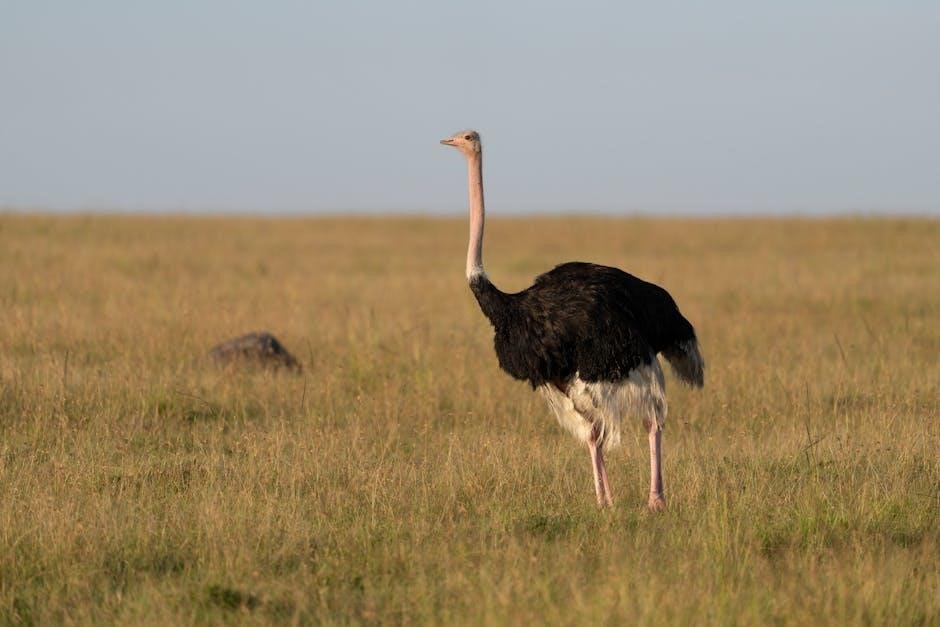
Cultural and Historical Significance
National parks preserve not only natural wonders but also the cultural and historical heritage of indigenous peoples, with ancient sites, artifacts, and stories that connect us to the past.
Indigenous Peoples and National Parks
National parks hold profound cultural and spiritual significance for Indigenous Peoples, who have lived in harmony with these lands for thousands of years. Many parks are situated on ancestral territories, preserving sacred sites, artifacts, and traditional lands. Indigenous communities often serve as stewards of these areas, sharing their deep knowledge of the environment and cultural practices. Parks provide a platform for storytelling, cultural preservation, and education, allowing visitors to connect with the rich histories of Native peoples. Collaborative efforts between park authorities and Indigenous groups aim to honor and protect these sacred spaces, ensuring their legacy endures for future generations.
Historic Sites Within National Parks
National parks are not only natural wonders but also treasure troves of history, safeguarding numerous historic sites that reveal the past. From ancient cliff dwellings like Mesa Verde to colonial fortresses such as Castillo de San Marcos, these sites offer glimpses into diverse cultures and events. Many parks preserve archaeological findings, missions, and battlefields, showcasing human history alongside natural beauty. Visitors can explore these landmarks to gain insights into the lives of past civilizations and significant historical events. These sites are invaluable for education and reflection, connecting modern explorers with the rich cultural and historical heritage embedded within these protected landscapes.
Preserving Natural and Cultural Heritage
National parks play a vital role in preserving natural and cultural heritage, safeguarding fragile ecosystems, and protecting historical sites for future generations. These areas are home to ancient artifacts, indigenous cultural landmarks, and diverse wildlife, all of which require careful conservation. Park ranger programs, educational initiatives, and strict regulations ensure that these treasures are maintained without degradation. Visitors are encouraged to respect and learn about the heritage they encounter, fostering a deeper appreciation for conservation. By balancing tourism with preservation, national parks act as living museums, offering insights into the Earth’s natural beauty and human history while promoting sustainable practices to protect these irreplaceable resources.

Leave No Trace Principles
Leave No Trace Principles emphasize minimizing environmental impact through responsible practices like staying on trails and proper waste disposal, preserving nature for future generations.
Understanding the Seven Principles
The Seven Principles of Leave No Trace provide a framework for minimizing environmental impact. They include planning ahead, staying on designated trails, disposing of waste properly, and respecting wildlife. These guidelines ensure that natural areas remain pristine for future visitors, promoting sustainability and conservation. By adhering to these principles, adventurers can enjoy the beauty of national parks while preserving their integrity. Each principle addresses a specific aspect of outdoor behavior, from avoiding sensitive habitats to not bringing non-native species. Understanding and applying these principles fosters a deeper connection with nature and supports the long-term protection of these unique ecosystems.
Minimizing Your Impact on the Environment
Minimizing your impact on the environment is crucial for preserving national parks. Stay on designated trails to avoid eroding sensitive landscapes and protect vegetation. Carry a reusable water bottle and waste bag to reduce plastic use and ensure all trash is packed out. Avoid disturbing wildlife or plants, as even small actions can disrupt ecosystems; Refrain from touching or removing natural features, as this can cause irreversible damage. Use eco-friendly products to minimize chemical pollution in water sources. By adopting these practices, you help maintain the pristine beauty of these areas for future generations. Every small effort contributes to the conservation of these natural wonders.
Proper Waste Disposal in National Parks
Proper waste disposal is essential for maintaining the pristine condition of national parks. Always use designated trash receptacles or bear-proof containers to dispose of waste, ensuring no litter is left behind. Recyclable items should be separated and placed in appropriate bins. Never dispose of waste in water sources, as this can harm aquatic life and contaminate ecosystems. If no trash cans are available, pack your waste and dispose of it responsibly outside the park. This practice helps protect wildlife and preserves the natural beauty of these areas for future visitors. Remember, leaving no trace includes taking all trash with you when you leave. Proper waste disposal is everyone’s responsibility to safeguard the environment;
National parks offer unforgettable journeys through nature’s splendor, fostering connections and inspiration. Preserving these treasures ensures future generations can explore and cherish their beauty, promoting stewardship and wonder.
Final Tips for a Successful National Park Adventure
- Always check the weather forecast and trail conditions before heading out.
- Arrive early to secure parking, especially during peak seasons.
- Carry a detailed map, as GPS signals may be unreliable in remote areas.
- Stay hydrated and pack lightweight, nutrient-rich snacks for energy.
- Respect wildlife by maintaining a safe distance and never feeding animals.
- Follow all park rules and guidelines to protect the environment and ensure safety.
- Bring a portable charger for your phone or GPS device.
- Inform someone about your itinerary, including your expected return time.
- Enjoy the moment and take time to appreciate the natural beauty around you.
By following these tips, you can ensure a safe, enjoyable, and memorable national park adventure.
Why National Parks Are Worth Preserving
National parks are invaluable treasures that protect diverse ecosystems, cultural heritage, and natural beauty for future generations. These protected areas safeguard biodiversity, providing habitats for countless species and maintaining ecological balance. They also preserve historical and Indigenous cultural sites, offering insights into the past. National parks play a critical role in combating climate change by acting as carbon sinks and promoting sustainable practices. By conserving these lands, we ensure clean air, water, and recreational spaces for everyone. Preserving national parks is not just about protecting the environment; it’s about honoring our collective heritage and fostering a deeper connection with nature. Their preservation is essential for Earth’s health and humanity’s well-being.
